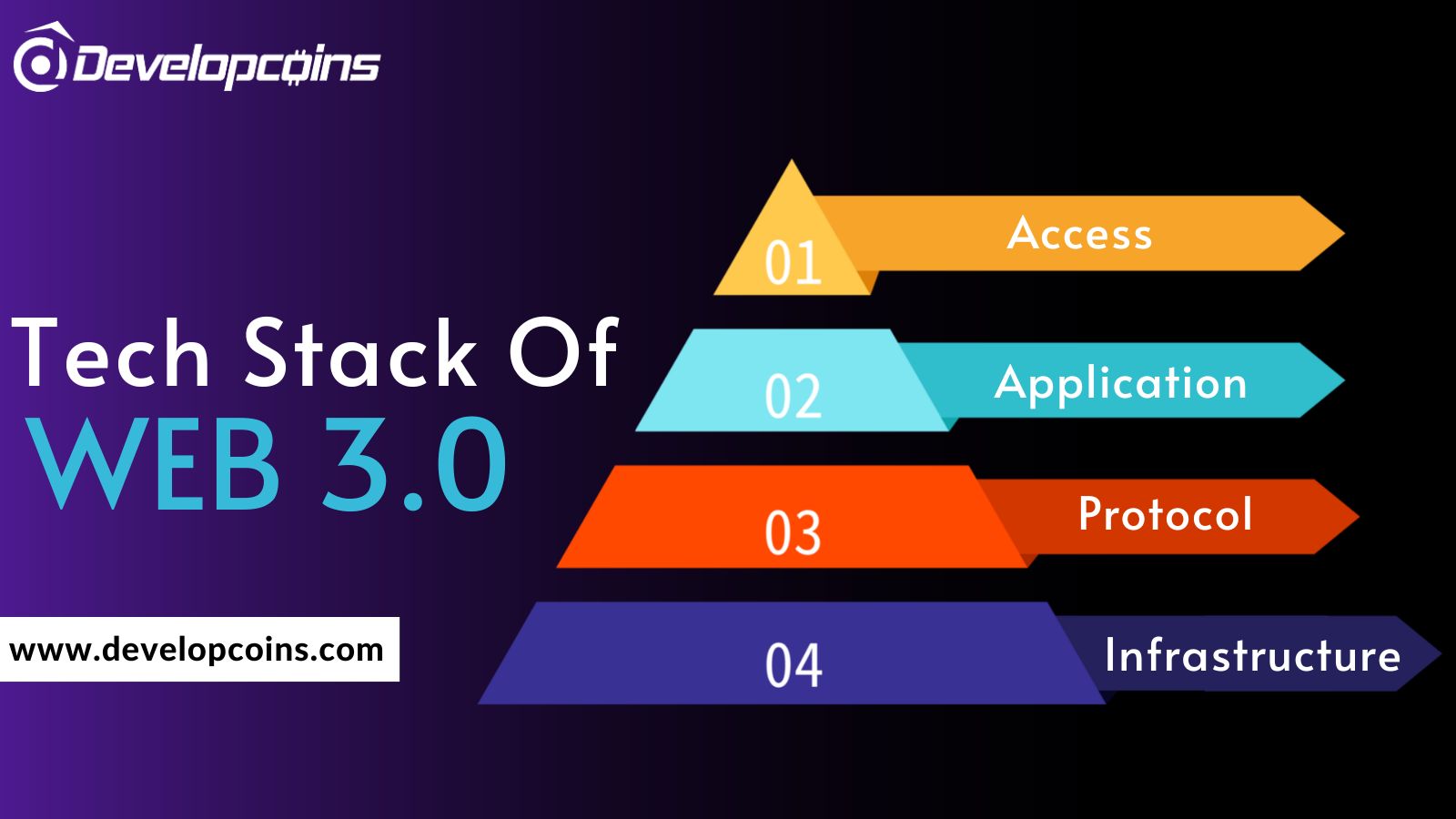

Explore the web 3.0 technology stack with this complete guide from Developcoins, a leading Web 3.0 Development Company

Web 3.0, the current buzzword in the digital world will go far beyond many trending technologies like NFTs, Cryptocurrencies etc. With its gaining pace, almost anything in this world like purchasing a product or acquiring a service will be completely powered-by this futuristic tech, Web 3.
Now in this blog, lets have a look at the technical aspect in detail and break it down all the about Web 3.0.
In general, Web 3.0 is the Third-Gen World Wide Web that serves a prime purpose to provide a serverless, decentralized internet. Unlike in Web 1.0 and Web 2.0, this Web 3 offers “Read-Write-Interact” version of internet.
With an aim to provide complete data ownership transparency and user freedom, Web 3 relies on various technologies like Blockchain, Machine Learning and possibly Artificial Intelligence. Now by leveraging such cutting-edge technologies, Web 3 uses a futuristic tech stack architecture to create a new paradigm of internet. An overview on such a tech stack is coming right up.
Infrastructure Layer
Protocol Layer
Application Layer
Access Layer
Infrastructure Layer
This is the very first layer of Web 3 tech stack on top of which everything like Smart Contract, Storage facility, Communication protocols, Financial primitives etc are built. As it holds such a huge category of blocks, this layer is responsible for doing a wide range of specified tasks as mentioned below.
Networking
Virtualization
Computing
Data storage and more.
Protocol Layer:
The Protocol layer comes next to the infrastructure layer. This layer leverages many popular Blockchain technologies like Ethereum, TRON, Avalanche, Solana and also uses various consensus algorithms and virtual machines. They are as follows.
Consensus Algorithm
Proof Of Work
Proof Of Stake
Proof Of History
Stellar Consensus Protocol
Ripple Consensus Protocol
Proof Of Space And Time
Virtual Machines
Virtual Machines are mainly designed to ensure a platform's security and also help in auto executing the codes from all the nodes that lie within the network. Below mentioned are the various types of virtual machines used by different blockchains.
Ethereum - Ethereum 1.0, Hashgraph, Ethermint
Solana and Cardano - Direct Low Level Virtual Machines
Kadena, Tezos uses its own transition machines.
Application Layer:
Next comes the application layer which includes a wide range of use cases from DeFi, NFTs to many other DApp applications. Some of the biggest decentralized Web 3 applications are Uniswap, Aave, OpenSea etc. Also, this is the layer that lets the users to easily interact with an intuitive front-end layer of the Web 3 platform.
Access Layer:
This top most layer in the Web 3 architecture serves as the entry point for all the Web 3 activities. Instead of traditional username and password, this layer of Web 3 requires a Blockchain wallet in order to provide the users with easy and simplified access. This layer not only acts as an authentication layer but also functions as a secured transaction layer.
As of now, these above mentioned layers forms the architectural structure that builds the developing world of Web 3.0. However, with evolving technology, the tech stack of Web 3 can be altered in many ways in the future, to provide betterment in what we have now.
Wrap Up:
To keep you updated about the progressing tech stack of Web 3.0, connect with the experts at Developcoins. Being a professional Web 3.0 development company, we have a keen observation on the market and watch out for any further development in the Web 3 world. Stay in touch with us and be well-informed.